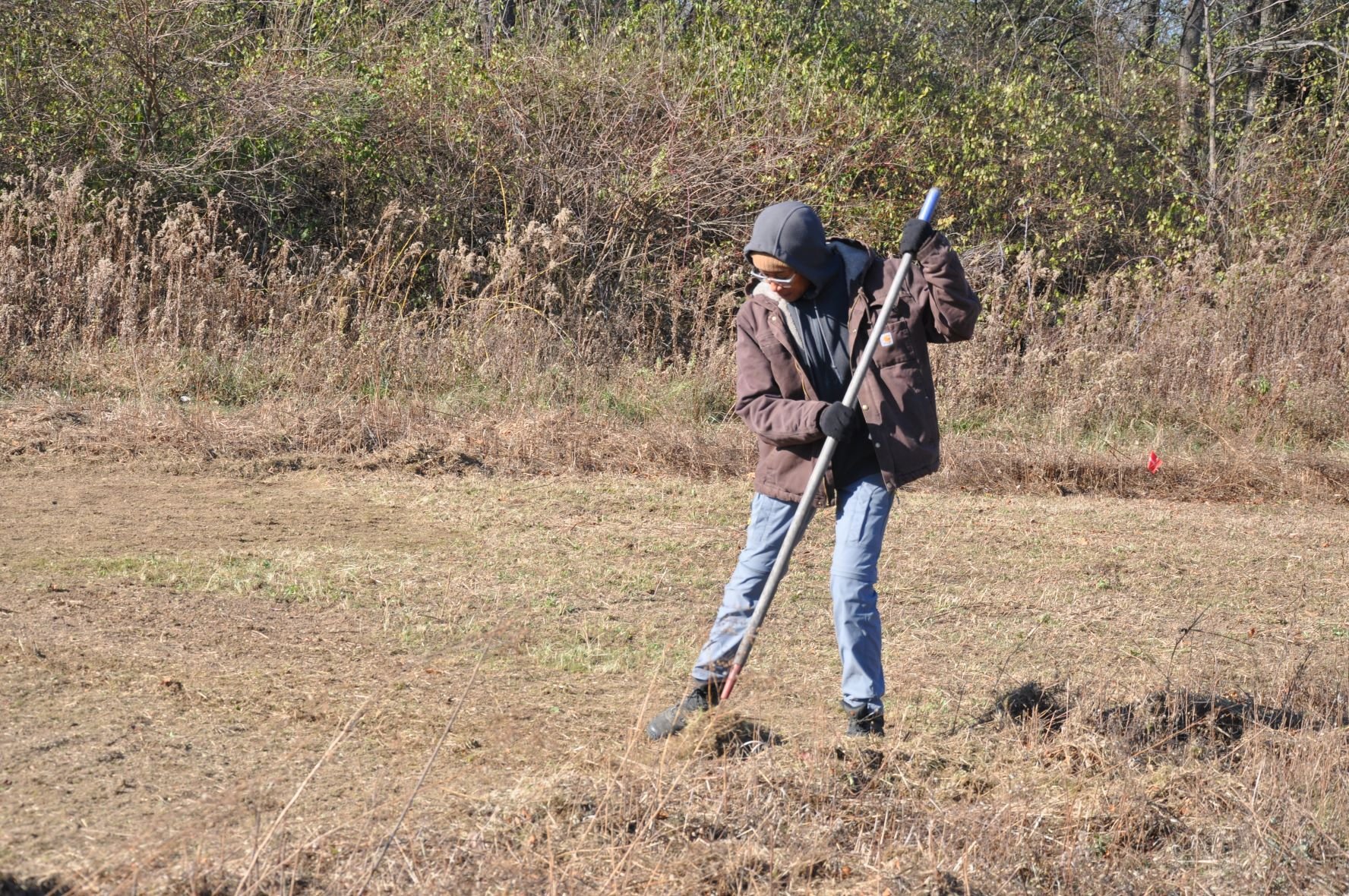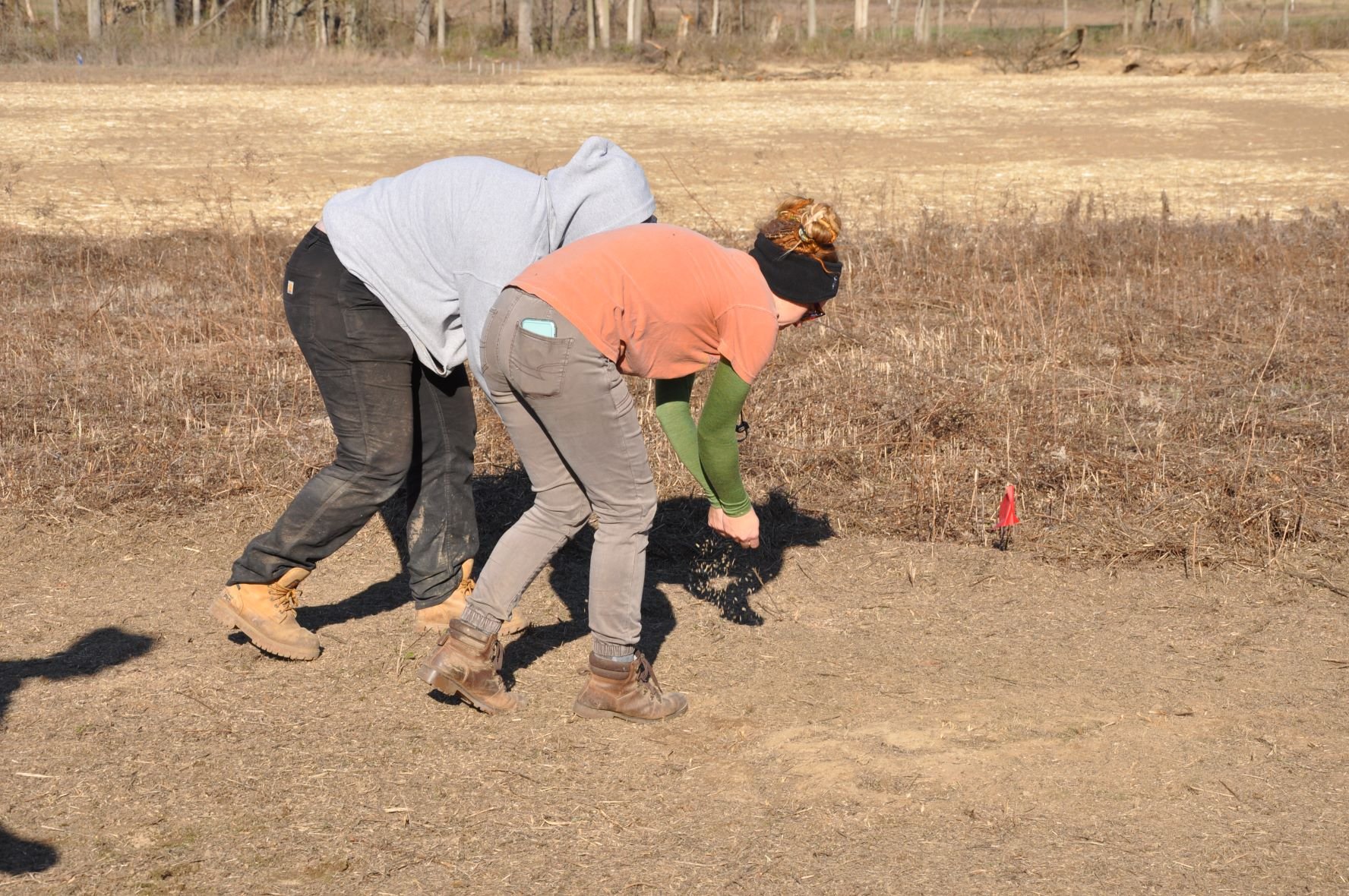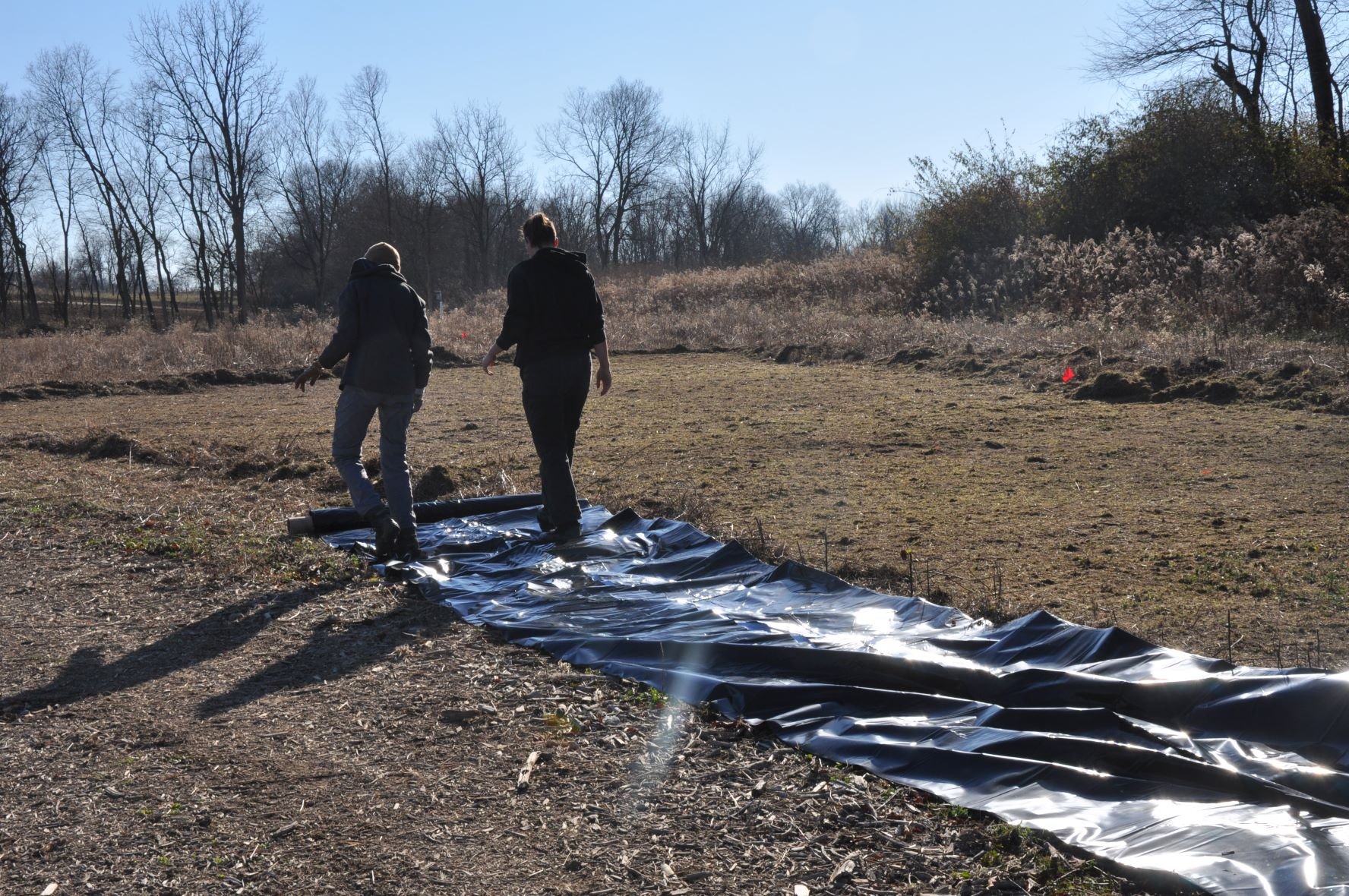Pollinator Way, Part I: Preparing the Ground
Agraria land team members Kelly Hager and Alicia Chereton cleared space for a new pollinator patch on Agraria. (All photos by Audrey Hackett)
This is the first of a series of occasional blog posts on the creation and growth of Pollinator Way on Agraria.
By Audrey Hackett
Cut, rake, repeat.
That was the rhythm of work for land team members earlier this week as they prepared the ground for Pollinator Way, a new stretch of pollinator habitat on Agraria. Under skies as blue as great blue lobelia, team members weed whacked and raked a large, roughly oval-shaped patch of ground until all the dried stalks and leaf litter were cleared away and the soil glowed a soft brown.
It was hard work. “You have to allow your arms to rest,” Alicia Chereton said, while raking vigorously. Her coworker Kelly Hager joked that she had already used up two arms and was accessing the extra ones stored “like Mr. Potato Head” behind her.
The patch is one of four “pockets” of concentrated wildflowers and grasses being created in the open fields between Front Field and South Pasture. All four of the closely spaced pockets border the path that leads to the southern part of the property. The project is supported by an Environmental Quality Incentives, or EQIP, grant that helps farmers and landowners integrate conservation into working lands.
Leading the effort at Agraria is Assistant Land Director River Johnson, a native plant lover and expert who has experience planting for pollinators and monitoring butterfly populations.
“Butterflies are keystone species,” she explained. Caterpillars are the main food for young birds, and so the presence, or absence, of butterflies is an index of ecological health.
“There are a lot of butterflies out here,” Johnson said. “And we’re hoping to bring more.”
The pollinator pockets will integrate into the already pollinator-friendly landscape, offering especially dense areas of habitat for bees and butterflies — and pops of color for human observers. But don’t expect to see them next year. Johnson estimates it will take three years before the pockets begin to reveal their full potential and beauty.
With the day’s cutting and raking finished on one patch, team members turned their attention to planting seeds in another patch (dubbed “The Bean” by Hager for its bean shape). There, the value of their meticulous efforts to clear space became apparent — seeds could be scattered on bare soil, rather than thrown to the competition of an already crowded field.
The first pound of seeds went quickly. Hager and Chereton crouched low to the ground, while Alberta Dempsey distributed seeds meditatively, with an outstretched hand. Johnson held open the seed bag and monitored the evenness of dispersal. And she offered this advice: “Talk to your seeds, tell them to grow.”
Most of a second pound was also spread on the patch. The seeds were a pollinator mix from Prairie Moon Nursery. Tiny seeds, spiky seeds, feathery seeds, and star-shaped seeds of grasses and wildflowers such as purple coneflower, black-eyed Susan, wild bergamot, anise hyssop, golden Alexander, great blue lobelia, foxglove beardtongue, and many more fluttered onto the soil. Chereton lightly raked them in.
In the spring, Johnson plans to engage volunteers in planting young plants to increase the density and productivity of the pollinator patches. And over time, there will be opportunities for volunteer citizen scientists to aid in monitoring and documenting butterfly populations in the area.
But meanwhile, there’s more cutting, raking, and sowing to do. Before the group wound down the day’s work, Johnson and Dempsey laid black landscape plastic along the edges of one patch to prepare it for the planting of Indiangrass and big bluestem in the spring. Johnson envisions tall grasses waving there. The talk turned philosophical. Johnson observed how gardening is an invitation to spontaneity — to trying things out. Dempsey pointed out that plants are resilient by nature, helping humans take the leap from planning to doing. “Plants are so forgiving,” Dempsey said.
It’s in that spirit that Pollinator Way is taking shape: one rake stroke, seed scattering, and spontaneous arising at a time. “I’m excited to see how it turns out,” Johnson said.
*Audrey Hackett is associate editor of Agraria Journal.





